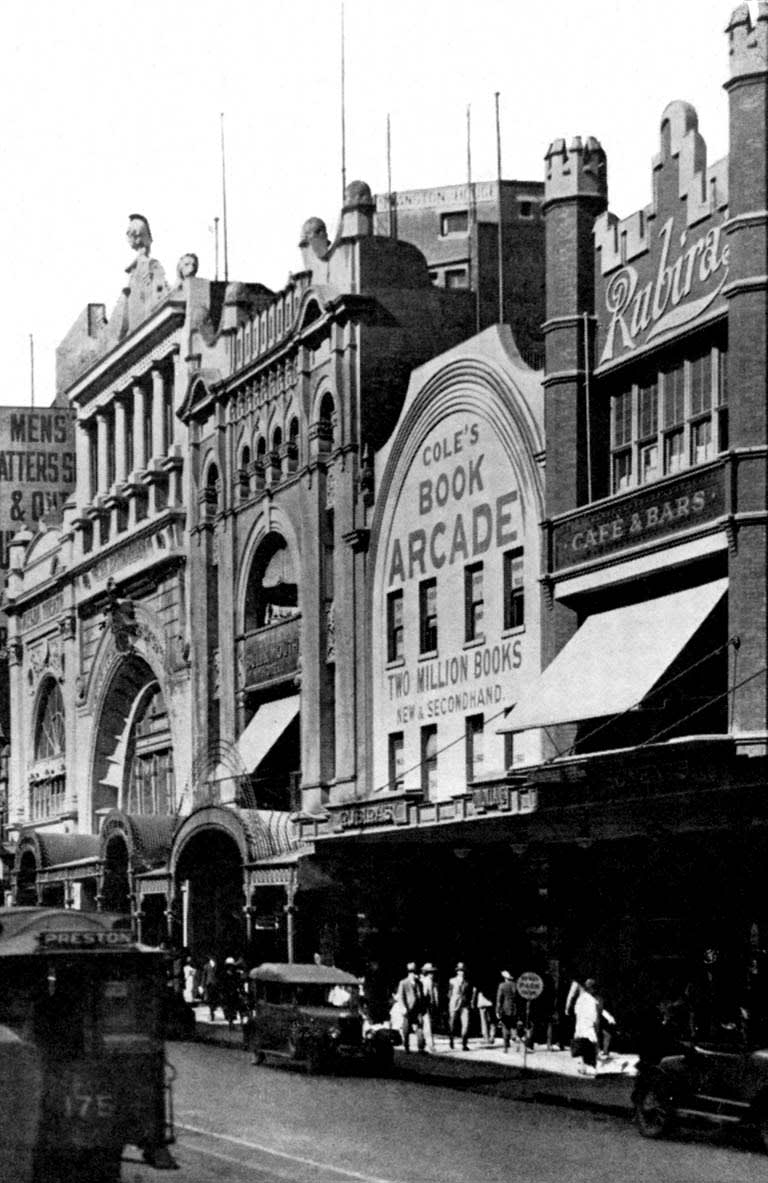The incredible Cole's Book Arcade
299 Bourke Street (second store and current street number) opened in 1883
Collins Street extension in 1906
Closed in 1929
Edward William Cole opened his first book arcade near the former Eastern Market in 1873. On the 27 January 1883 he opened his famous second store on the site of the current David Jones Men’s Store, on what is now called the Bourke Street Mall.
With around two million books on its shelves, the extraordinary Cole’s Book Arcade, also known as the Palace of Intellect, was reputedly the largest bookstore in the world. It was one of the iconic ‘must visit’ Melbourne stores in the late nineteenth and early twentieth centuries. In fact, it was so well known, that both Rudyard Kipling and Mark Twain visited it during their travels to Australia.
In 1906, the Coles’ Book Arcade was extended all the way through to Collins Street alongside Howey Place. E. W. Cole paved and built a beautiful glass and iron ornamental roof for Howey Place, at his own cost, which still stands proudly today. When the Cole’s Book Arcade was two-block lengths in size, it was spacious enough to include a menagerie featuring a monkey house, a fernery, a toyland, a stationary department, a second-hand book department, a glass and china department, a refreshment room, and a confectionery department. If that wasn’t enough, customers of all ages were also enticed with a string band, a symphonion powered by a clockwork mechanism and other mechanical devices, such as a hen that clucked and laid tin eggs containing either a sweet or a toy, when a penny was dropped into a slot. There were also comfortable chairs to sit in and read books, people were encouraged to do so by a sign that read: Read As Long As You Like – Nobody Asked To Buy.
E. W. Cole was an idealist. He believed passionately in the power of education to deliver a peaceful united (federated) world without borders before the year 2000. He expounded his views in pamphlets, books and medallions. E. W. Coles’ most famous book was the self-produced publication, Cole’s Funny Picture Book, which had many reprints and sold over a million copies, making it perhaps one of the most popular children’s books ever published in Australia.
E. W. Cole issued medallions that were either sold for three pence each or given as change, to be spent on other arcade purchases up to their 3d value. While many people kept them as souvenirs, others also had them pierced to wear on a necklace. Around 300,000 medallions were minted and 97 different types were issued. They were usually made of copper, brass or aluminium and were often gilded, silvered or bronzed. Creating highly desirable and valued collectibles was a great marketing idea then, as it is today.
While E. W. Cole passed away in 1918, the business continued after his death. In 1929, the executors of his will decided to wind down the business and sell the land on which it stood, which was at that time, as now, highly desired and valuable real estate. A family member purchased the goodwill and a shop, bearing the name Cole’s Book Arcade, was opened at the new address of 255 Swanston Street. The new venture lasted for an additional 10 years, but failed to survive the 1930s depression.
The Melbourne Museum has a Cole’s Book Arcade collection acquired over many decades. Items such as a mechanical hen, the symphonion and many of the variety of medallions issued can be seen there.
See them on the museum website:
http://museumvictoria.com.au/collections/themes/1900/cole-s-book-arcade-collection
